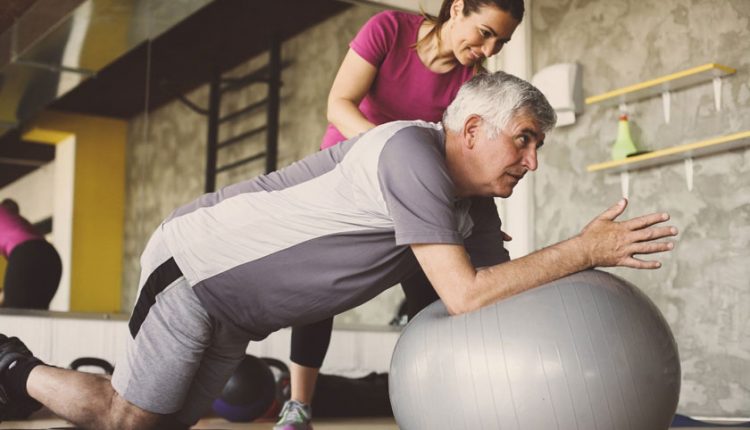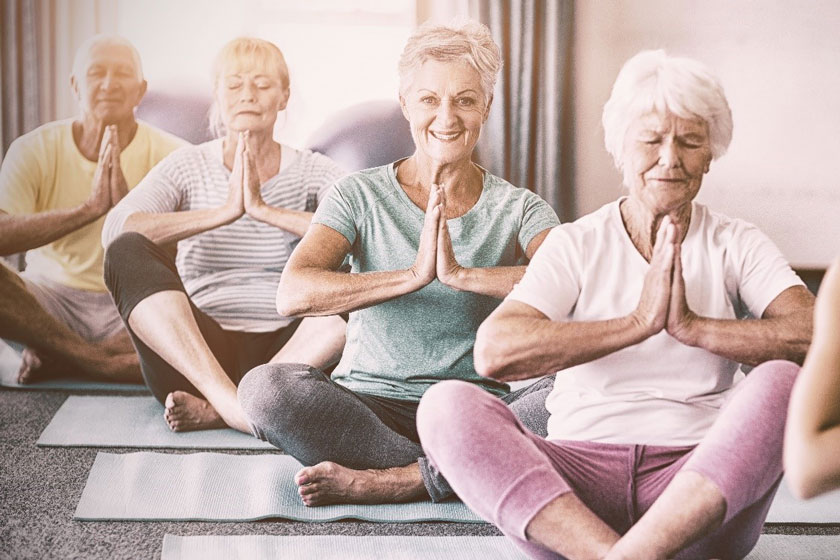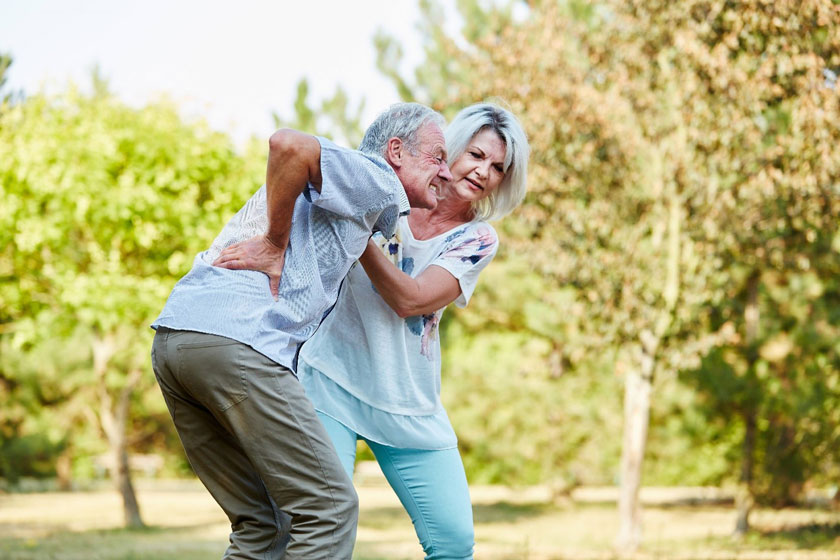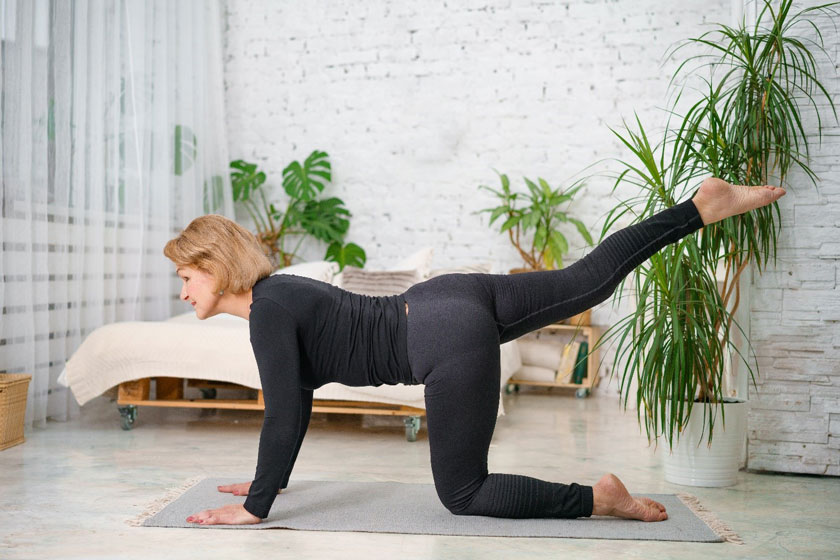
When it comes to mind-body wellness, there are mainly two camps: Pilates freaks and those who swear by Yoga. Both advocates say Yoga and Pilates workouts work the same way (lengthen and strengthen the body). both are forms of mind-body exercises, i.e., beneficial for stress management, breath control, physical fitness, and maintaing seniors’ mental health. However, many people believe one is superior to the other. (Which one, of course, depends on who you talk to). Do they have some physiological differences that make one more efficient than the other? Or is it just a matter of personal preference? This article definitely answers these questions and provides beneficial information on similarities and differences between Yoga and Pilates for seniors and will help you choose the best for your body.
Contents
- 1 What Is Pilates?
- 2 What Is Yoga?
- 3 Similarities and Differences Between Pilates and Yoga
- 4 Pilates vs. Yoga for Seniors: Which One Is Better?
- 5 Yoga or Pilates for Lower Back Pain
- 6 Which Is Better for Arthritis Yoga or Pilates?
- 7 Yoga or Pilates for Weight Loss
- 8 How Often Should You Do Yoga and Pilates?
- 9 Final Words
What Is Pilates?
The Pilates method was developed by a German physical trainer, Joseph Pilates. Pilates includes almost 500 aerobic and non-aerobic exercises that focus on the core. Each exercise also contains a specific breath technique followed by a rhythmic pattern. Pilates workouts focus on developing strength, flexibility, balance, and posture. Reformers, Cadillacs, and chairs are common equipment used in Pilates exercises. Exercises are designed to be low-impact and work the entire body, focusing on the core muscles (the muscles of the abdomen, lower back, and hips).
People with injuries or chronic conditions such as back pain or arthritis often turn to Pilates as a form of rehabilitation. Athletes also use it to improve their performance. It focuses on breathing and concentration as a mind-body exercise, making it an ideal stress-reduction and relaxation method.
What Is Yoga?
Yoga is an ancient Indian exercise consisting of body movements and the mind to achieve spiritual mindfulness. The primary purpose of yoga is to create a connection between mind and body. Like Pilates, yoga comes in different styles, including ashtanga yoga, hatha yoga, yin yoga, and vinyasa yoga.
Both yoga and Pilates provide a wide range of benefits which are summarized in the below table:
Benefits of Pilates vs. Yoga |
|
| Pilates | Yoga |
| Improve flexibility | Improve flexibility |
| Better posture | Improve strength and muscle tone |
| Better coordination | Reduce stress |
| Improve overall muscle tone | Better mind-body connection |
| Increase strength, especially core | Weight loss |
| Relaxation | Improve heart health |
| Reduce stress | Injury protection |
| Weight loss | Improve energy level |
| Injury prevention | More efficient metabolism |
| Injury repair | – |
| Improve cardiovascular health | – |
Similarities and Differences Between Pilates and Yoga
As mentioned above, Pilates and yoga are alike in many ways. Both exercises focus on breath, alignment, balance, strength and flexibility, i.e., both use the entire body (see also best balance exercise for seniors). Nonetheless, here we mention a brief breakdown of Pilates and yoga differences:
- Pilates is a resistance workout. It has a mat routine, plus exercises that need to be done on specific Pilates machines. Strengthening the stomach, improving posture, stabilizing and elongating the core, and increasing overall balance and strength are the primary purpose of Pilates. In addition, Pilates is a bit more fast-paced than yoga.
- The ultimate purpose of yoga is to build a connection between self-consciousness and universal consciousness using physical activities. This exercise can improve emotional and spiritual health through mediation exercises and activities. The repetitive movements of yoga are therapeutic, increasing the flexibility and strength of the body.
In general, the most remarkable difference between Pilates and yoga is the ultimate goal.
Yoga helps you provide a meditative environment to promote your overall life quality, relieve stress and improve the body. And Pilates forces you to increase body awareness and work from the core to achieve a stronger body.

Pilates vs. Yoga for Seniors: Which One Is Better?
It has been proven that both workouts benefit seniors. However, you should answer two questions if you are going to find the right fit for yourself:
- What is your ultimate goal?
- What is your starting point, physical or mental?
For example, Pilates will benefit you if you have back pain or your job/sport requires a strong core, or you are inclined to a low-impact workout that highly challenges your muscles.
To combat age-related muscle loss or osteoarthritis in the elderly, Pilates will be a great way to strengthen both muscles and bones and a good choice for building muscles in seniors.
On the contrary, yoga will suit you if your ultimate goal is a better mind-body connection, relaxation, and a higher degree of flexibility. Stiffness is another common problem in seniors with a sedentary lifestyle and lack of physical activities. Sometimes sitting for most of the day may cause stiffness in seniors, and the best way to relieve such pain is yoga, particularly restorative yoga.
However, to find which one is the best for your specific goals, read the rest of the article.
Yoga or Pilates for Lower Back Pain
Several studies on the effect of Pilates on relieving back pain show that different people in any age range who took part in a Pilates routine suffered less back pain. Scientists recommend Pilates for people with chronic low back pain based on these results. Seniors also can try Pilates chair exercises to decrease their pain and strengthen their core from a seated position.
The scientific studies on yoga’s effectiveness on back pain show that Iyengar yoga had a considerable effect on treating chronic spinal pain in the short term.
Which Is Better for Arthritis Yoga or Pilates?
Both Pilates and yoga for seniors help with arthritis. To be more exact, Pilates increases bone and joint strength, and yoga promotes flexibility through strengthening muscles surrounding the joints. In a study by Oklahoma Medical Association, it has been revealed that yoga and meditation could significantly reduce the pain in people who suffer from osteoarthritis and rheumatoid arthritis. However, it’s essential to consult with your instructor to inform you about the exercises seniors should avoid.

Yoga or Pilates for Weight Loss
It has been said that both Pilates and yoga for seniors can help them to lose weight. The amount of calories you can burn during each workout depends on the type of practice. The below table is based on the American Council of Exercise (ACE) report on the number of calories burnt after 50 minutes of each practice:
Calories Burned After Yoga and Pilates Exercises |
|
| Exercises | Burned calories (kcal) |
| Hatha yoga | 144 |
| Power yoga | 237 |
| Vinyasa yoga* | 540 |
| Beginner Pilates | 175 |
| Advanced Pilates | 254 |
*The measured calorie is after 1-hour practicing
So, if you are a beginner, Pilates will help you burn more calories and lose weight. It is worth mentioning that to lose weight safely as a senior, it’s better to work with a team consisting of a doctor, a nutritionist, and a trainer to create an individualized plan for you. Don’t forget that yoga helps seniors lose weight too.

How Often Should You Do Yoga and Pilates?
A challenging yoga practice usually takes two or three classes a week, plus you can practice specific yoga poses on your own when you feel full of stress and want some relief. Nonetheless, one class per week and a few sessions at home will still be great.
On the other hand, it’s recommended for Pilates beginners to participate in sessions once a week plus do some practices at home. It is suggested that advanced Pilates users practice at least three times per week.
Final Words
Yoga and Pilates share lots of similarities: both focus on the mind-body connection and increase the life quality of seniors. Despite these similarities, the main difference between the two practices is “your ultimate goal.”
Regular exercise is the healthiest habit a person can have. And as long as our bodies allow us, the form of the exercise should not matter. I was a runner for almost 20 years; I quitted when I became 45. I’ve been doing pilates for 17 years, I’m 62, and I’m in good shape, and I don’t get sick that often. My daughter practises yoga; she says it helps her relax and is a great physical activity. My point is, whether it’s yoga, pilates, swimming or walking in the neighbourhood, physical activity is a must for people of all ages.
It seems unbelievable that you can burn more than 500 calories doing vinyasa yoga in just 50 minutes! However, it seems challenging enough. I’ve never done vinyasa yoga; I just searched it on youtube, and, wow! I know that the reason for exercise is more than just burning extra calories, but is it late to start something like vinyasa at 54?
My mother is 55, and she has mild depression. Her psychologist recommended that she participate in group exercises. I thought that yoga or pilates might be helpful for her. I’m not sure if it is a good idea or not. Does anyone have a similar experience?
I think in the end, it is a matter of preference. Even though some exercises are similar, I’ve always preferred pilates, and I don’t have a logical reason for it. I just like pilates better. But I agree that yoga is better for mental peace and relaxation.
As a senior with an ache in my back and bones, I prefer to try yoga. Because my doctor forbids me to do high-intensity sports activities and some sports which intense my pain. But I am too comfortable with yoga. Because it’s not a complex exercise, and I can free my body and spirit from stress and other nasty things.
I guess yoga is better if you’re looking to build your upper back and more flexibility along the spine; it will also give you a stronger stance.
Pilates mainly focuses on the core, but the exercises work a lot with extension, so you’ll also work muscles that you’d develop if you pursue ballet!
It is worth mentioning that yoga includes some meditation or spirituality while there is no philosophy behind Pilates;
Pilates is just an exercise system.
I should also add that yoga is more of a slow burn, and Pilates is intense.
I think both practices complement each other in the end.
I teach Pilates, and I’ve seen postures being improved by working the small muscles in the upper back, shoulders and chest.
Yoga and Pilates both will tone your body, increase your flexibility and encourage you to focus on your breathing.
While Pilates is fabulous for correcting alignment, building core stability, and creating strength, the yoga movements’ openness and fluidity allow one to tone up in a totally different way.
I have also found that Yoga increases energy flows in the body in a way that no other form of exercise does and gives me a sense of mental equanimity.
I don’t want to be a smart-ass here, but I see people in the comments repeating the idea that yoga is an ancient spiritual way of life which is complete rubbish.
The physical part of yoga is barely 40–50 years old, and there were few to no rules as to how one did it.
It’s a way to exercise and is no more noble or ancient than lifting weights or running up the stairs. Stop being dramatic all the time!!
Regardless, I think the choice of instructor is a lot more critical than which style you choose…
I personally prefer Pilates. Yoga has a positive impact on my mental health as well as my physical health, but Pilates helps you get your body in shape.
They aren’t exclusive, I do both, and I enjoy them both. Pilates is a killer ab workout, and Yoga usually gives me a great full body isometric workout…
I’d recommend trying a few classes of each. Everything also depends on the instructor you choose.
Yoga has more variety in terms of styles, suggesting a broad range of classes depending on whether you enjoy, a challenging workout or very relaxing postures…